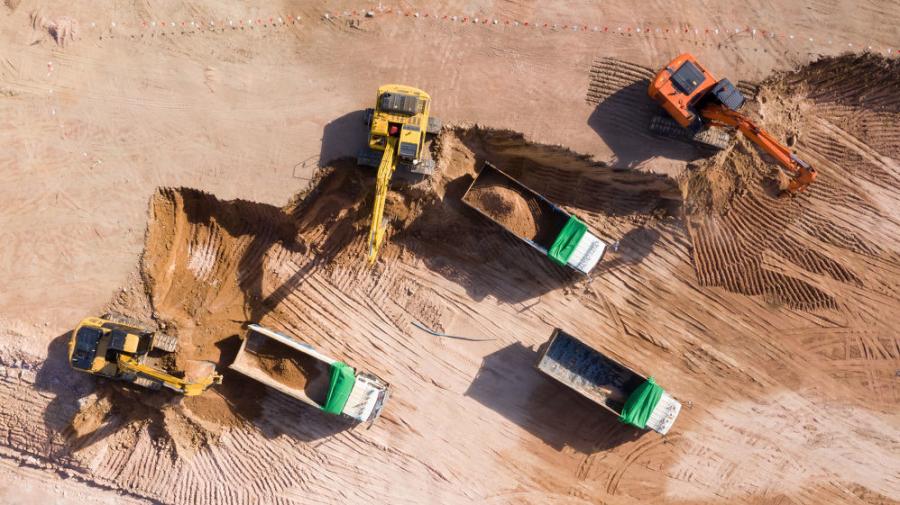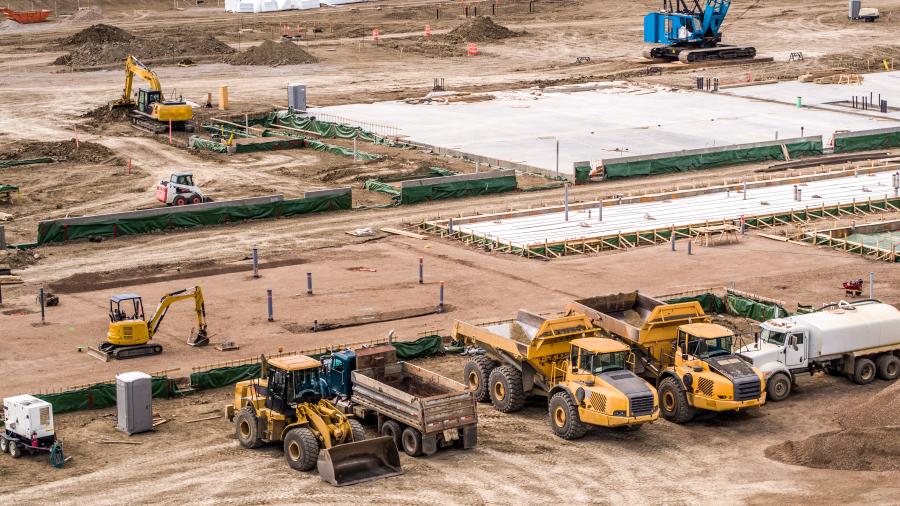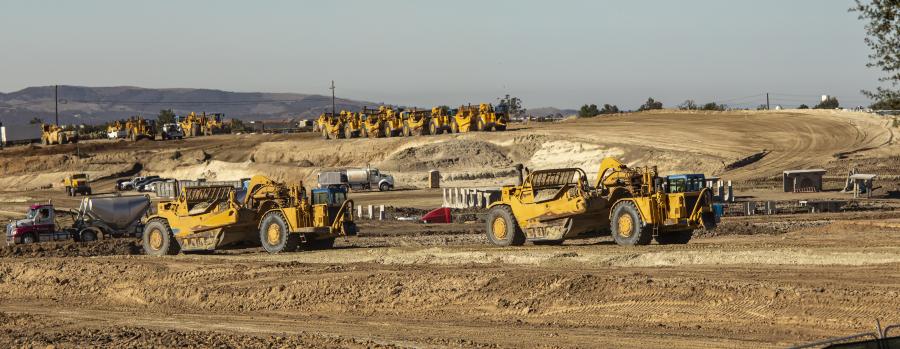The new ANSI/ASSP standard A10.33 is designed to help contractors plan and manage a shared construction project site
Looking for guidance on best practices in construction operations? All construction-related activities are covered in the ANSI/ASSP A10 standards series. One of the newest volumes, the A10.33-2020, Safety and Health Requirements for Multi-Employer Projects, provides a roadmap for choreographing a shared construction project.
Construction and demolition sites are among the most hazardous work environments. They can be especially risky when multiple contractors and employers introduce operational complexities, noted the American Society of Safety Professionals (ASSP).
In fact, the various employers on a project can be cited for OSHA violations at the job site.
OSHA defines a multi-employer site as a workplace where full-time, part-time, temporary or contract employees report to different employers working together on site.
Many large-scale construction projects with teams of general contractors and subs are perfect examples of multi-employer job sites, noted IndustrySafe.
"Multi-employer sites can complicate regulatory compliance," blogged the construction industry safety management software provider.
That can "make it difficult for employers and workers to understand their specific safety responsibilities," according to the Philadelphia, Pa., company.
Multi-employer construction projects require a higher level of managing people, machines and materials for the sake of efficiency and safety.
Construction and demolition operations must be well planned and executed with all bases covered.
"Risks on construction and demolition sites are dynamic and continuously evolve as conditions, technologies and participants change," said John Johnson, CSP.
Chair of the A10 standards committee, Johnson believes enhanced safety is achieved when the entire project hierarchy — owner to craft worker — engages in an identified safety process.
The rise in fatal work injuries worries Deborah Roy, ASSP president.
The BLS reported that 5,333 fatal work injuries occurred in 2019, a 2 percent increase from the previous year's total of 5,250.
This marks the fifth time in the past six years that fatal occupational injuries increased, Roy said.
"With many safety advancements readily available to employers nationwide, it's troubling that we're continuing to see higher numbers," she said.
She encouraged employers to adopt voluntary consensus standards that promote best practices and prevent worker injuries, illnesses and deaths.
"Most occupational incidents are preventable given today's technologies and proven safety and health strategies," said Roy.
While OSHA sets workplace safety standards, safety-minded organizations implement voluntary consensus standards because of their merit.
ASSP believes consensus standards reflect diverse viewpoints and represent state-of-the-art practices and technologies.
They also address gaps where no regulatory standard exists in today's rapidly changing environment.
"Voluntary national consensus standards can transform safety programs from compliance-based cost centers to corporate sustainability initiatives," said Roy.
These initiatives can "save lives and positively impact the organization's bottom line," she added.
Playing It Safe
Multi-contractor projects require "a clear approach to managing," said Brad Kelechava, American National Standards Institute (ANSI) marketing manager.
As Kelechava noted, the United States construction industry employs more than seven million people and annually generates $1.3 trillion worth of structures.
Depending on their size, construction projects can involve several contractors performing tasks side by side.
Safety risks that can result from lack of coordination and communication among contractors on a job site can be dangerous and costly.
"Construction projects unfortunately can influence an assortment of issues resulting from a lack of coordination among the employers," said Kelechava.
"Uncertainty surrounding the terms and conditions of employment among the various groups of workers engaged in the project" also can cause problems, he wrote.
The new standard emphasizes that worker safety can be achieved when the entire project hierarchy, from the owner to craft worker, engages in the safety initiative.
For multi-employer operations, the standard outlines minimum safety and health guidelines to provide a safe and healthy work environment.
This "while accomplishing cost-effective construction and avoiding undesirable occurrences and even injuries," said Kelechava.
The standard addresses uncertainty within multi-contractor operations by defining the duties and responsibilities of employees and other responsible parties.
This includes owner/client/manager responsibilities, contractor qualifications and competent persons.
It also specifies the placement of these individuals in the project safety and health plan.
"In addition, the document defines a senior project supervisor … as well as senior contractor supervisors, who are designated by each contractor," said Kelechava.
The senior project supervisor has final authority and responsibility for the project safety and health plan. The supervisors are notified for corrective action.
The standard assists project owners, construction supervisors, contractors and equipment manufacturers.
ASSP published the new standard as secretariat for the ANSI/ASSP A10 committee.
The committee's focus is on safety requirements for construction and demolition operations.
Avoiding Worksite Violations
IndustrySafe offers tips to help multiple employers coordinate safety efforts on the job site.
Safety incidents "can grind operations to a halt and damage businesses' reputations," according to the company's blog.
Carefully screen contractors whenever possible. Double-check work histories, incident rates and safety policies.
"Ideally, before you put the contract out for bid, any potential bidders should complete a pre-qualification process," blogged IndustrySafe.
Does a bidding contractor have a history of incidents or safety violations at similar work sites?
Have they received citations from OSHA at some point in the past?
"Asking these questions ahead of time will help you keep unsafe practices away from your projects," wrote the blogger.
Develop a master safety plan for your project. While each employer will bring their own safety plans, a master plan should be developed for consistency.
The document should outline safety performance objectives, each employer's responsibilities and communication and reporting strategies.
The plan should also clearly set the frequency and scope of site inspections and incident reporting procedures.
It also should outline safety observation schedules and required training courses, according to the IndustrySafe blog.
"All components of the master plan can then be incorporated into employers' individual safety plans," according to IndustrySafe.
Discuss safety in advance. Address every potential hazard with contractors and subs before work begins or new parties enter the site of work in progress.
IndustrySafe noted that this practice gives each employer a chance to identify issues others may have missed and improve safety management.
Conduct multi-employer training. Collaborate with contractors and subs to make sure everyone is on the same page.
Coordinate mandatory training sessions and safety meetings as a group before work begins, especially if the work involves different training requirements.
"This ensures that all workers receive consistent instruction and information about the hazards on site," according to IndustrySafe. "To track compliance, organize your training efforts and records using a Web-based training management system, and encourage other contractors to do the same."
Set clear hazard reporting procedures. All employees must understand how to report safety hazards encountered on the job.
Using a hazard reporting program, they can easily document hazards, attach photos and notify team members so the problem can be corrected quickly.
At the end of the day, strong workplace cultures coupling management and employees with safety and health climates must become a priority, ASSP's Roy said.
Like the construction industry, ASSP "will continue to push for better protection of workers to ensure that everyone returns home safe to their families every day," she said. CEG
Lucy Perry
Lucy Perry has 30 years of experience covering the U.S. construction industry. She has served as Editor of paving and lifting magazines, and has created content for many national and international construction trade publications. A native of Baton Rouge, Louisiana, she has a Journalism degree from Louisiana State University, and is an avid fan of all LSU sports. She resides in Kansas City, Missouri, with her husband, who has turned her into a major fan of the NFL Kansas City Chiefs. When she's not chasing after Lucy, their dachshund, Lucy likes to create mixed-media art.
Read more from Lucy Perry here.
Today's top stories


















